Dysbiosis exacerbates colitis by promoting ubiquitination and accumulation of the innate immune adaptor STING in myeloid cells
- PMID: 34051146
- PMCID: PMC8237382
- DOI: 10.1016/j.immuni.2021.05.008
Dysbiosis exacerbates colitis by promoting ubiquitination and accumulation of the innate immune adaptor STING in myeloid cells
Abstract
Alterations in the cGAS-STING DNA-sensing pathway affect intestinal homeostasis. We sought to delineate the functional role of STING in intestinal inflammation. Increased STING expression was a feature of intestinal inflammation in mice with colitis and in humans afflicted with inflammatory bowel disease. Mice bearing an allele rendering STING constitutively active exhibited spontaneous colitis and dysbiosis, as well as progressive chronic intestinal inflammation and fibrosis. Bone marrow chimera experiments revealed STING accumulation in intestinal macrophages and monocytes as the initial driver of inflammation. Depletion of Gram-negative bacteria prevented STING accumulation in these cells and alleviated intestinal inflammation. STING accumulation occurred at the protein rather than transcript level, suggesting post-translational stabilization. We found that STING was ubiquitinated in myeloid cells, and this K63-linked ubiquitination could be elicited by bacterial products, including cyclic di-GMP. Our findings suggest a positive feedback loop wherein dysbiosis foments the accumulation of STING in intestinal myeloid cells, driving intestinal inflammation.
Keywords: SAVI; STING; colitis; colon; commensal; dysbiosis; intestinal inflammation; microbiome; myeloid cells; ubiquitination.
Copyright © 2021 Elsevier Inc. All rights reserved.
Conflict of interest statement
Declaration of interests The authors have no competing interests to declare.
Figures
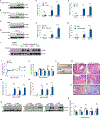
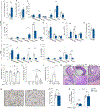
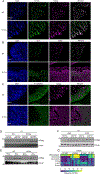

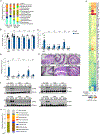
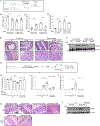

Similar articles
-
Stimulator of interferon genes (STING) activation exacerbates experimental colitis in mice.Sci Rep. 2019 Oct 3;9(1):14281. doi: 10.1038/s41598-019-50656-5. Sci Rep. 2019. PMID: 31582793 Free PMC article.
-
The cytosolic sensor STING is required for intestinal homeostasis and control of inflammation.Mucosal Immunol. 2018 May;11(3):820-834. doi: 10.1038/mi.2017.88. Epub 2017 Dec 20. Mucosal Immunol. 2018. PMID: 29346345
-
Microbial dysbiosis fuels STING-driven autoinflammation through cyclic dinucleotides.J Autoimmun. 2025 Jun;154:103434. doi: 10.1016/j.jaut.2025.103434. Epub 2025 May 6. J Autoimmun. 2025. PMID: 40334619
-
The STING pathway: An uncharacterized angle beneath the gut-retina axis.Exp Eye Res. 2022 Apr;217:108970. doi: 10.1016/j.exer.2022.108970. Epub 2022 Feb 1. Exp Eye Res. 2022. PMID: 35114214 Review.
-
Innate Lymphoid Cells in Intestinal Homeostasis and Inflammatory Bowel Disease.Int J Mol Sci. 2021 Jul 16;22(14):7618. doi: 10.3390/ijms22147618. Int J Mol Sci. 2021. PMID: 34299236 Free PMC article. Review.
Cited by
-
Evaluating the therapeutic potential of genetically engineered probiotic Zbiotics (ZB183) for non-alcoholic steatohepatitis (NASH) management via modulation of the cGAS-STING pathway.RSC Med Chem. 2024 Sep 13;15(11):3817-36. doi: 10.1039/d4md00477a. Online ahead of print. RSC Med Chem. 2024. PMID: 39290381 Free PMC article.
-
Inflammatory Bowel Disease (IBD)-Associated Colorectal Cancer (CRC): Is cGAS-STING Pathway Targeting the Key to Chemoprevention?Int J Mol Sci. 2025 May 22;26(11):4979. doi: 10.3390/ijms26114979. Int J Mol Sci. 2025. PMID: 40507791 Free PMC article. Review.
-
Activation of autoreactive lymphocytes in the lung by radioresistant cells expressing a STING gain-of-function mutation.JCI Insight. 2024 Jul 18;9(16):e174331. doi: 10.1172/jci.insight.174331. JCI Insight. 2024. PMID: 39024563 Free PMC article.
-
Context-dependent functions of pattern recognition receptors in cancer.Nat Rev Cancer. 2022 Jul;22(7):397-413. doi: 10.1038/s41568-022-00462-5. Epub 2022 Mar 30. Nat Rev Cancer. 2022. PMID: 35355007 Review.
-
Potential therapeutic strategies for colitis and colon cancer: bidirectional targeting STING pathway.EBioMedicine. 2025 Jan;111:105491. doi: 10.1016/j.ebiom.2024.105491. Epub 2024 Dec 6. EBioMedicine. 2025. PMID: 39644772 Free PMC article. Review.
References
-
- ADEN K, TRAN F, ITO G, SHEIBANI-TEZERJI R, LIPINSKI S, KUIPER JW, TSCHURTSCHENTHALER M, SAVELJEVA S, BHATTACHARYYA J, HASLER R, BARTSCH K, LUZIUS A, JENTZSCH M, FALK-PAULSEN M, STENGEL ST, WELZ L, SCHWARZER R, RABE B, BARCHET W, KRAUTWALD S, HARTMANN G, PASPARAKIS M, BLUMBERG RS, SCHREIBER S, KASER A & ROSENSTIEL P 2018. ATG16L1 orchestrates interleukin-22 signaling in the intestinal epithelium via cGAS-STING. J Exp Med, 215, 2868–2886. - PMC - PubMed
Publication types
MeSH terms
Substances
Grants and funding
LinkOut - more resources
Full Text Sources
Other Literature Sources
Molecular Biology Databases
Research Materials

